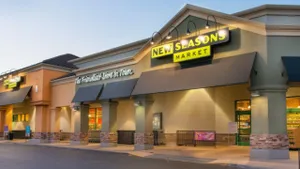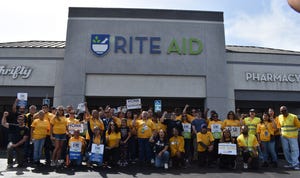On Point: Penny wise, pound foolish
January 1, 2018
Food safety looks like the wrong place to make budget cuts. By Tom Weir In America, the route to safer eating sometimes seems to pass through a roller coaster. Maybe it is because ours is already the world’s safest food supply that we approach incremental improvements in fits and starts. Also, we can always point to the horror story that is China to make ourselves look terrific by comparison. Last December, bipartisan majorities in both houses of Congress passed the first major revision to our food-safety laws since 1938, which would have the Food and Drug Administration check domestic and imported food more intensively and develop a new system to prevent foodborne illness. President Obama asked for $955 million for the agency’s food-safety efforts in the fiscal year that begins Oct. 1. House Republicans offered $750 million, $87 million less than this fiscal year. The Republicans say they are being fiscally responsible. Food-safety advocates say they are preventing the FDA from carrying out the new law’s mandates. How this will sort out is anybody’s guess. The budget deadline is a few months away, and in Washington posturing always precedes problem-solving. The public appears to support the extra spending. A bipartisan polling team commissioned by the Pew Charitable Trusts found that two-thirds of likely voters favored it and almost 75% said it would be worth paying up to 3% more for food if that is what it took. Let us keep in mind that poll respondents sometimes choose the noble answer as long as the idea of paying more out of pocket is only a theoretical construct. Despite sometimes inadequate funding, the agencies responsible for food safety have done a sufficiently good job to maintain consumer confidence at high levels. The Food Marketing Institute’s U.S. Grocery Shopper Trends, released in May, said 88% of shoppers surveyed were at least somewhat confident in the safety of supermarket food, the highest level in seven years. However, a survey released by Deloitte in the same month found 73% of respondents saying their level of concern about food safety was higher than five years ago. These findings are not necessarily contradictory, but they signal that food safety should be a constant focus for the industry. In June, the Centers for Disease Control and Prevention issued its food safety report card, which disclosed that the annual number of salmonella poisoning cases has not declined over the last 15 years. On the upside, the number of infections from E. coli O157:H7 was cut almost in half. That took a sustained effort, which may not be fully appreciated because of fears aroused by the outbreak of a deadly new strain of E. coli in Germany. A study released this spring by the University of Florida’s Emerging Pathogens Institute said the U.S. economy loses $8.1 billion a year in costs created by the 10 top food pathogens. Half of those are found in meat, which is regulated by the Department of Agriculture. So while the flap over FDA funding is getting more attention, investing further in USDA’s Food Safety and Inspection Service—targeted by House Republicans for a $35 million cut—might also bring a lot of bang for the buck. The combined cuts of $240 million proposed for the two food-safety agencies seem like small change compared to the billions in economic damage they might be able to head off with sufficient funding.
About the Author
You May Also Like




